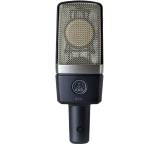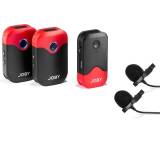Beliebte Filter: Typ
747 Ergebnisse entsprechen den Suchkriterien
-
Sehr gut
1,3
AKG C 214
- Typ: Instrumentenmikrofon, Gesangsmikrofon
- Technologie: Kondensator
- Richtcharakteristik: Niere
Zum Produkt
-
Sehr gut
1,3
Sennheiser MK 4 digital
- Typ: Podcastmikrofon, Instrumentenmikrofon, Gesangsmikrofon
- Technologie: Kondensator
- Richtcharakteristik: Niere
Zum Produkt
-
Gut
1,8
AKG Perception Live P 3 S
- Typ: Gesangsmikrofon
- Technologie: Dynamisch
- Richtcharakteristik: Niere
Zum Produkt
-
Gut
1,9
Panasonic VW-VMS 10 E
- Typ: Kamera-Mikrofon
- Technologie: Kondensator
- Richtcharakteristik: Stereo, Niere
Zum Produkt
-
Gut
2,0
Joby Wavo Air
- Typ: Kamera-Mikrofon, Funkmikrofon, Handy-Mikrofon, Ansteckmikrofon
- Technologie: Elektret, Kondensator
- Richtcharakteristik: Omnidirektional (Kugel)
-
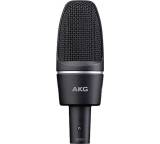
Gut
1,6
AKG C3000
- Typ: Instrumentenmikrofon, Gesangsmikrofon
- Technologie: Kondensator
- Richtcharakteristik: Niere
Zum Produkt
-
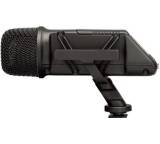
Sehr gut
1,5
Rode Microphones Stereo VideoMic
- Typ: Kamera-Mikrofon, Richtmikrofon
- Technologie: Kondensator
- Richtcharakteristik: Niere
Zum Produkt
-

Gut
1,7
Tascam TM-250U
- Typ: Podcastmikrofon, Tischmikrofon
- Technologie: Kondensator
- Richtcharakteristik: Superniere
-

Gut
2,3
Rollei Hear:Me Mini
- Typ: Kamera-Mikrofon, Handy-Mikrofon, Richtmikrofon
- Technologie: Kondensator
- Richtcharakteristik: Niere
-

Gut
2,0
Behringer Video Mic
- Typ: Kamera-Mikrofon, Handy-Mikrofon, Richtmikrofon
- Technologie: Kondensator
- Richtcharakteristik: Superniere
-
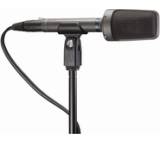
Sehr gut
1,1
Audio-Technica AT8022
- Typ: Kamera-Mikrofon, Reportermikrofon, Instrumentenmikrofon, Gesangsmikrofon
- Technologie: Kondensator
- Richtcharakteristik: Stereo, Niere
Zum Produkt
-

Sehr gut
1,0
Sennheiser AVX-MKE2
- Typ: Kamera-Mikrofon, Funkmikrofon
- Technologie: Kondensator
- Richtcharakteristik: Omnidirektional (Kugel)
Zum Produkt
-
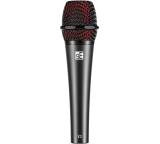
Gut
1,8
SE Electronics V3
- Typ: Gesangsmikrofon
- Technologie: Dynamisch
- Richtcharakteristik: Niere
Zum Produkt
-

Sehr gut
1,5
Beyerdynamic TG V70d
- Typ: Gesangsmikrofon
- Technologie: Dynamisch
- Richtcharakteristik: Hyperniere
Zum Produkt
-

Gut
2,3
Saramonic Blink 500 B2
- Typ: Funkmikrofon, Mikrofon-Set, Ansteckmikrofon
- Richtcharakteristik: Omnidirektional (Kugel)
- Anschluss: Klinke (3,5 mm)
-

Gut
1,6
ESI cosMik uCast
- Typ: Podcastmikrofon
- Technologie: Kondensator
- Richtcharakteristik: Niere
-

Sehr gut
1,4
Warm Audio WA-47
- Typ: Instrumentenmikrofon, Gesangsmikrofon
- Technologie: Röhre, Kondensator
- Richtcharakteristik: Bidirektional (Acht), Niere, Omnidirektional (Kugel)
Zum Produkt
-
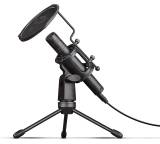
Gut
1,7
Trust GXT 241 Velica
- Typ: Podcastmikrofon, Tischmikrofon
- Technologie: Kondensator
- Richtcharakteristik: Niere
-

Sehr gut
1,3
Shure PGX Beta 87A
- Typ: Funkmikrofon, Gesangsmikrofon
- Technologie: Kondensator
Zum Produkt
-

Sehr gut
1,1
MSI Immerse GV60
- Typ: Podcastmikrofon, Tischmikrofon
- Technologie: Kondensator
- Richtcharakteristik: Stereo, Bidirektional (Acht), Niere, Omnidirektional (Kugel)
-

Sehr gut
1,0
Austrian Audio OC707
- Typ: Gesangsmikrofon
- Technologie: Kondensator
- Richtcharakteristik: Niere
-
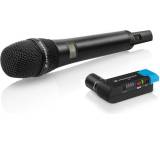
Sehr gut
1,3
Sennheiser AVX-835
- Typ: Kamera-Mikrofon, Funkmikrofon
- Technologie: Dynamisch
- Richtcharakteristik: Niere
Zum Produkt
-

Gut
1,7
Rode Microphones NT1-A
- Typ: Instrumentenmikrofon, Gesangsmikrofon
- Technologie: Kondensator
- Richtcharakteristik: Niere
Zum Produkt
-

ohne Endnote
Delock Vlog Shotgun Mikrofon Set
- Typ: Podcastmikrofon, Handy-Mikrofon, Tischmikrofon, Richtmikrofon
- Technologie: Kondensator
- Richtcharakteristik: Superniere
-

Gut
2,0
Tascam TM-70
- Typ: Podcastmikrofon, Tischmikrofon
- Technologie: Dynamisch
- Richtcharakteristik: Superniere
-

Gut
2,0
Rollei Hear:Me Wireless
- Typ: Kamera-Mikrofon, Funkmikrofon
- Richtcharakteristik: Omnidirektional (Kugel)
- Anschluss: Klinke (3,5 mm)
-

Sehr gut
1,5
iCON Cocoon
- Typ: Gesangsmikrofon
- Technologie: Kondensator
- Richtcharakteristik: Niere
-
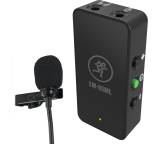
Gut
1,8
Mackie EM-95ML
- Typ: Kamera-Mikrofon, Handy-Mikrofon, Ansteckmikrofon
- Technologie: Kondensator
- Richtcharakteristik: Omnidirektional (Kugel)
-

Gut
2,0
iCON Martian
- Typ: Gesangsmikrofon
- Technologie: Kondensator
- Richtcharakteristik: Niere
-
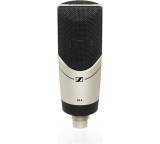
Sehr gut
1,3
Sennheiser MK 8
- Typ: Gesangsmikrofon
- Technologie: Kondensator
- Richtcharakteristik: Superniere, Bidirektional (Acht), Breite Niere, Niere, Omnidirektional (Kugel)
Zum Produkt
-

Gut
2,0
Boya BY-WM 4 Pro K2
- Typ: Kamera-Mikrofon, Funkmikrofon, Handy-Mikrofon
- Richtcharakteristik: Omnidirektional (Kugel)
- Anschluss: Klinke (3,5 mm)
-

Sehr gut
1,4
Elgato WAVE:1
- Typ: Podcastmikrofon, Tischmikrofon
- Technologie: Elektret, Kondensator
- Richtcharakteristik: Niere
-

Sehr gut
1,5
Apogee Electronics HypeMiC
- Typ: Podcastmikrofon, Tischmikrofon, Instrumentenmikrofon, Gesangsmikrofon
- Technologie: Kondensator
- Richtcharakteristik: Niere
-
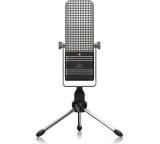
Mangelhaft
5,0
Behringer BV44
- Typ: Podcastmikrofon, Tischmikrofon
- Technologie: Elektret, Kondensator
- Richtcharakteristik: Superniere
-

Sehr gut
1,0
Thomann the t.bone BC500
- Typ: Podcastmikrofon
- Technologie: Dynamisch
- Richtcharakteristik: Niere
-

Gut
1,7
AKG P120
- Typ: Podcastmikrofon, Gesangsmikrofon
- Technologie: Kondensator
- Richtcharakteristik: Niere
Zum Produkt
-
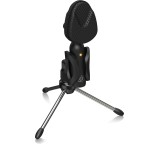
Mangelhaft
5,0
Behringer BV4038
- Typ: Podcastmikrofon, Tischmikrofon
- Technologie: Elektret, Kondensator
- Richtcharakteristik: Superniere
-
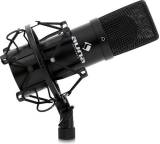
Gut
2,0
Auna MIC-900B
- Typ: Podcastmikrofon, Gesangsmikrofon
- Technologie: Kondensator
- Richtcharakteristik: Niere
Zum Produkt
-
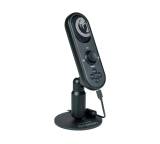
Befriedigend
3,0
Nacon Mikrofon für Streaming
- Typ: Podcastmikrofon, Tischmikrofon
- Richtcharakteristik: Niere
- Anschluss: Kopfhörer-Anschluss, USB







